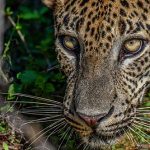 Weird Stuff
Weird Stuff  Weird Stuff
Weird Stuff  Animals
Animals 10 Inspiring Tales of Horses Being Human
 Mysteries
Mysteries Top 10 Haunting Facts About the Ghost Ship MV Alta
 History
History 10 Surprising Stories About the Texas Rangers
 Humans
Humans 10 Philosophers Who Were Driven Mad by Their Own Theories
 Miscellaneous
Miscellaneous 10 Video-Game-Worthy Weapons and Armors from History
 Weird Stuff
Weird Stuff 10 Psychics Who Accurately Predicted Wartime Events
 The Arts
The Arts 10 Pieces of Art Inspired by a Broken Heart
 Health
Health 10 Science Fiction-Sounding New Medical Treatments
 History
History 10 Surprising Facts About the Father of Submarine Warfare
 Weird Stuff
Weird Stuff 10 Times Real Laws Were Based on Bizarre Hypotheticals
 Animals
Animals 10 Inspiring Tales of Horses Being Human
 Mysteries
Mysteries Top 10 Haunting Facts About the Ghost Ship MV Alta
Who's Behind Listverse?

Jamie Frater
Head Editor
Jamie founded Listverse due to an insatiable desire to share fascinating, obscure, and bizarre facts. He has been a guest speaker on numerous national radio and television stations and is a five time published author.
More About Us History
History 10 Surprising Stories About the Texas Rangers
 Humans
Humans 10 Philosophers Who Were Driven Mad by Their Own Theories
 Miscellaneous
Miscellaneous 10 Video-Game-Worthy Weapons and Armors from History
 Weird Stuff
Weird Stuff 10 Psychics Who Accurately Predicted Wartime Events
 The Arts
The Arts 10 Pieces of Art Inspired by a Broken Heart
 Health
Health 10 Science Fiction-Sounding New Medical Treatments
 History
History 10 Surprising Facts About the Father of Submarine Warfare
Ten Seemingly Made-Up Animal Facts That Are Actually Legit
There’s no shortage of interesting animal facts out there and floating around the internet. And since there are thousands upon thousands of weird, strange, unique, and cool animal species spread all throughout the globe, it makes some sense that there would be a ton of unpredictable and unexpected facts about them. Planet Earth is massive and varied, and the creatures that make up the collective population of Mother Nature are, in turn, more diverse than you could ever imagine.
So in this list today, we’ll take a look at some of those facts. As you read through these tidbits, you may tell yourself that they’re made up—but they’re not! These are ten totally legit animal facts that you likely haven’t heard before. But by the time you finish with this list, you’ll be that much smarter for having picked up these totally random (and totally cool!) bits of biological information!
Related: 10 Animals with Zero Survival Instincts
10 Don’t Blush!
When it comes to embarrassment, no other animal in the entire animal kingdom feels it like we humans do. Of course, we experience various feelings of shame, guilt, and regret that pop up at times in our lives or after certain events or issues. Animals don’t have those same feelings of regret—at least, as far as we can tell—and they simply carry on with their lives no matter what may happen, good or bad. There’s one other thing animals don’t do, either: They don’t have a physiological response to being ashamed, embarrassed, or called out!
That’s right: humans are the only animals known to blush. Blushing, to put it simply, happens when the blood vessels in the skin of one’s face dilate. This occurs during times of embarrassment, like when it feels as though the entire world is watching you make a mistake. It’s a peculiar evolutionary tic because it’s unique to humans. And not only that, it’s unexplainable because it would seem to signal to other possible evolutionary competitors that something is wrong. Most animals don’t want to give off that sign, as it could leave them vulnerable in various situations out in the wild.
But for humans, blushing is part of the game of life! We do it all the time, and we send those signals of embarrassment and shame to those around us whether we mean to make it happen or not. (Most often not!) Interestingly, there is at least one other animal that experiences the dilation of their facial blood vessels involuntarily, though! Bald uakari monkeys are known to “blush” in their own way at times. However, it has nothing to do with embarrassment. Instead, these monkeys experience hot, bright red faces as a tell-tale sign of problems with their physiological health.[1]
9 What a Cute Little Dinosaur!
The word “microraptor” means “small thief” in Greek, and it’s the perfect name for the smallest-known dinosaur to ever exist. We all know about velociraptors (thanks, Jurassic Park), and many other dinosaurs are household names now, too.
But millions of years ago, there also existed a tiny, feathered dinosaur with wings on all four of its limbs called the “microraptor.” The four wings were unique, obviously, considering most flying dinosaurs (and birds) have but two. But with four wings, the microraptor was able to fly around quickly and aggressively while it hunted its tiny prey and lived its tiny life.
We keep using the word “tiny” because these things were seriously tiny. The average microraptor weighed just 2 pounds (0.9 kilograms) and was only about a foot (30.5 centimeters) tall when it stood up straight. From head to tail, it measured less than 30 inches (76 centimeters) in length, too. That size combination makes it roughly the size of a modern-day crow.
And now, millions of years after it lived, it continues to be the smallest-known dinosaur in all of history. And barring some major archaeological discovery forthcoming, the microraptor will likely carry that diminutive distinction for the rest of history![2]
8 Rabbits Can’t Burp or Vomit
Unlike humans and many other animals, rabbits are physically incapable of vomiting. They can’t throw up or retch at all, and they never will in their entire lives—except in rare cases right before death. That’s because rabbits have a one-way digestive system. Once they chew and swallow something, regardless of what it is, it has to make its way all the way through the rabbit’s intestines and insides until it goes out the other end. The system simply can’t push food (or anything else) back out of the mouth if it goes down wrong.
While that’s certainly a strange fact, it’s also a potentially dangerous feature for rabbits that are kept as pets. Because they can’t vomit things that are bad for them, anything that goes down stays inside to the point of potential death. Whereas dogs, cats, and other animals can retch up nasty things that don’t agree with their system, rabbits simply have to deal with it. In turn, they commonly suffer digestive tract problems. In the worst cases, those turn into stomach and intestinal blockages, which can lead to excruciating death.
Plus, without the ability to burp, painful gases can build up in rabbits’ stomachs and cause lasting health issues. The sum total of all that means rabbits are uniquely susceptible to being poisoned by a variety of things they may find on the ground simply because their little bodies can’t expel the items like most other animals are able to do. Yikes![3]
7 Peacocks Aren’t Peacocks
If you’ve ever been to a zoo pretty much anywhere in North America, you should be familiar with peacocks. These colorful birds have massive, expansive tails that fan out as they walk around. They are mostly harmless, too, and do well to avoid humans. So, at places like zoos, they are generally allowed to roam in the open, pick off little snacks and treats that other animals (okay, children) leave lying around, and exist as quasi-wild zoo residents that pretty much have the run of the place.
But what if we told you that you’ve been calling them by the wrong name for your entire life? Everybody uses the term “peacock” to describe these colorful birds. But that’s not actually all inclusive!
The proper name for these aviary animals is “peafowl.” The males of the species are peacocks, then, while the females are known as “peahens.” In turn, baby peafowl are known as “peachicks.” It’s a small distinction, of course. But it’s an important one for the poor peahens and peachicks, who have been all but forgotten in popular peafowl culture![4]
6 An Extra Paw Pad
Humans have five fingers and five toes—well, most of us do, at least. And while that’s the “normal” allotment of digits for mankind, catkind experiences something very different! Cats actually have an extra pad on each one of their front paws, and that’s totally normal and expected. See, a cat’s legs have to do a lot more work collectively than human legs do.
Their front legs are used for balance as they navigate tricky and treacherous terrain (or the arm of the couch… whatever!). A cat’s back legs are massive in relative proportion, too. That’s because their back legs are used for jumping and pushing off to sprint. So they need to be strong, durable, and very, very long.
Beyond just the leg idiosyncrasies, though, cat paws are fascinating themselves. If you’ve ever really looked closely at a cat’s paws, you’ll notice five simple pads on each back leg. Then, when you move your glance to the two front legs, you’ll see those same five—and a sixth! If you look closely, every cat has a sixth pad hiding out behind the rest on their front paws.
Commonly called a “carpal pad,” this extra cushion is actually critical. While the cat’s back legs are meant for explosive movements, the carpal pad helps cats slow down when it’s time to ease up. It is used for extra traction when running, climbing, jumping off a high spot, or coming down a steep decline. Think of it like an extra shock absorber built into the front of your cat![5]
5 Unique Noses
No two dog and cat noses are perfectly alike. Just like human fingerprints, dogs and cats have totally unique noses with patterns of ridges and creases that are unlike those of any other dog in the world. If we ever needed to do so, we could actually create a database of dog and cat noses like we have with fingerprints for humans. Then, we could file away every dog and cat nose within that database, log the specific details of its ridges, and figure out which dog sniffed which item after checking for nose prints with a forensic investigator.
We kid, of course, but the fact remains that every dog and cat has a unique nose by which you could technically identify them if you needed to do so. You’d simply track the ridges, bumps, creases, and crevices and figure things out! By the way, a dog’s nostrils are known by their own specific term, too: nares. That wasn’t a word we were familiar with before learning these nose print facts, but now that we’ve read it, we figured it’d be nice to pass it along to you, too![6]
4 Cows Have Best Friends
Humans aren’t the only creatures that need lasting companionship and tight emotional bonds. Cows do, too! Studies throughout the years have consistently shown that cows need to make friends with the other cows around them. And they don’t just pick random cows who are the closest on the farm.
In their own way, cows actually seek out other cows with similar personalities and dispositions. In time, they build their version of close friendships with each other. By seeking out like-minded individuals, they flourish (or, if not, they falter) throughout their lives. And they panic if they get to a place and can’t find their friends!
The fact that cows form bonds with each other in similar ways to humans is an important part of how we view the future of farming. Factory farms leave cows isolated in their crowds and thereby push them to depression and agitation more easily. In turn, the milk they produce is not as plentiful or as nutrient-rich. Agriculture experts have for years now tried to figure out how to strike a balance with that—put cows in a situation where they can fulfill their dairy duties but keep them happy enough around their friends to make it worthwhile for all involved.[7]
3 Mortimer Mouse?!
Okay, so this one isn’t about real, live animals, but it’s close enough. So we’re going to go with it! For much of the 1920s, Walt Disney was dead-set on bestowing the moniker “Mortimer” upon his would-be-famous mouse. He felt “Mortimer Mouse” sounded like a good name for the likable rodent, and as he carved out the cartoon’s identity, he ran with it. But thank goodness for his wife, Lillian. She felt that “Mortimer” was too stuffy of a name for a child’s mouse, and she was adamant that her spouse ought to change it.
For a while, Walt resisted Lillian’s pleas. He was committed to Mortimer, and he felt the alliterative name sounded good and flowed well. Then, on a cross-country train ride from New York to California late in the 1920s, Lillian finally got her way. She used the long trip to sit her husband down and convince him that “Mortimer” was a dumb name for a mouse. Which, well, it is.
Sorry if you’re named Mortimer, but it’s a bad name for a kid’s cartoon character. Whatever it was about the train ride worked, and Walt finally saw the light. Mortimer became Mickey, the mouse hit the public’s view in late 1928, and the rest is history![8]
2 All Hail Mayor Duke!
The tiny village of Cormorant, Minnesota, needed a mayor in 2014, so they decided to elect Duke. Now, Duke isn’t the last name of a person who lived in town and was running for the position. And it wasn’t the honorific given to some British royal who had moved to small-town Minnesota to enter local politics, either. No, Duke was the name of a massive, friendly Great Pyrenees dog who resided in Cormorant and had the entire town wrapped around his little finger… uh, his little paw.
The community decided to vote Duke into office in 2014, and beginning that year, he actually served four legitimate, consecutive one-year terms as the town’s mayor. As you might imagine, the mayoral position is mostly a ceremonial one, but Duke worked at it with aplomb. He proved himself to be a real connector within the community, bringing together all the village residents and giving them something to be proud of as the national media descended to cover his political career.
After his fourth term in 2018, Duke retired from the gig and moved on to live his life chasing squirrels and eating snacks away from the spotlight. Sadly, he died a year later. But Duke’s memory will forever live on as the political pooch![9]
1 A Union for a Unicorn
Many states and countries have national flowers, national trees, national birds, and even national animals. In the United States, of course, we have the bald eagle. Saudi Arabia claims the Arabian camel as its national creature. South Africa has the springbok, Thailand has the Asian elephant, and Papua New Guinea has the aptly named bird of paradise. But when it comes to national animals, no region on Earth does it better than Scotland. That’s because the far northern UK-affiliated land calls the unicorn its national animal!
Unicorns were first mentioned thousands of years ago in ancient religious tracts from India. Their legend spread all over the world soon after that, and by the Middle Ages, their lore was common in and around Scotland. In the middle of the 1400s, Scottish leaders adopted the unicorn as the land’s national animal, and it’s been that way ever since. It wasn’t an entirely random choice, though.
Legend has it that unicorns were responsible for purifying poisoned water and were thus a good omen and a sign of health and stability for humans in need. Searching for health and hygiene in the middle of the 15th century, the Scottish latched on to the idea of the unicorn. And ever since, it’s stuck![10]








